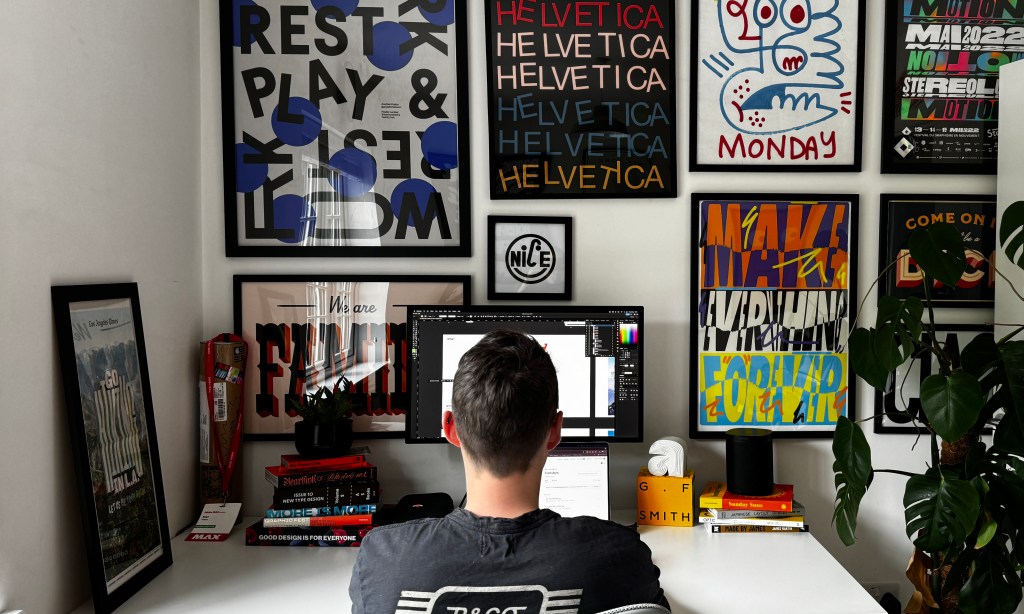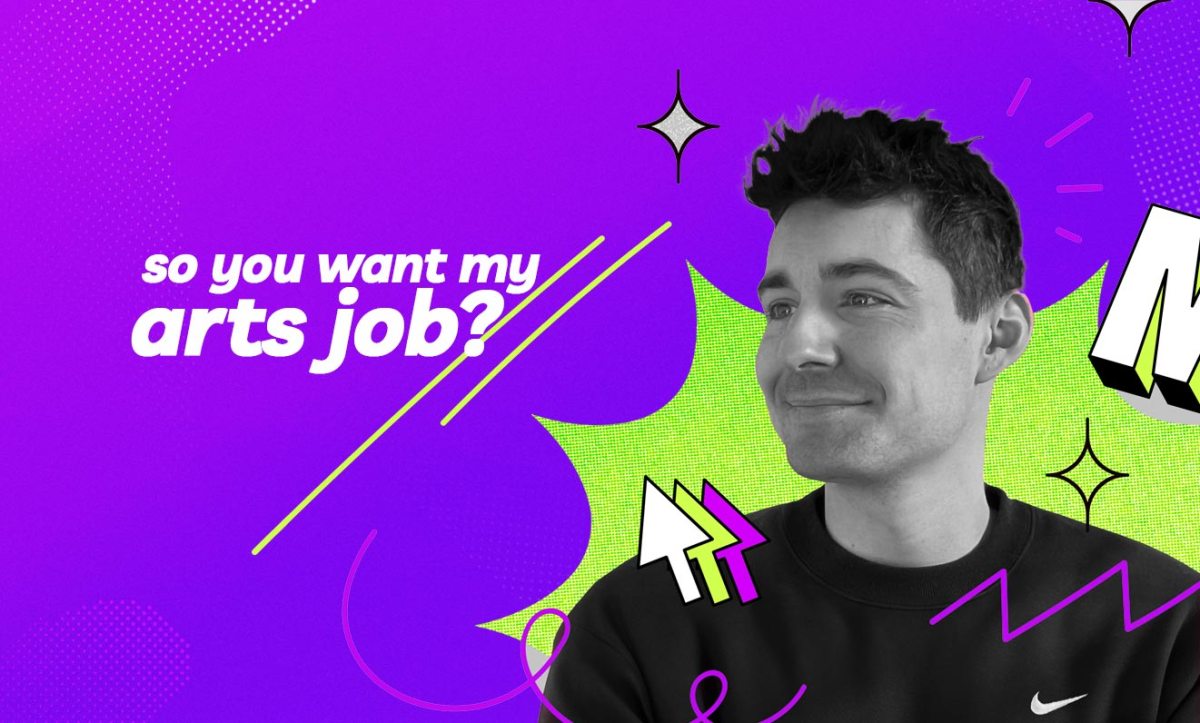UK-based artist Mat Voyce describes himself as ‘your friendly neighbourhood type designer and animator’ and is one of 29 keynote speakers at this year’s The Design Conference (5-7 June) held at Brisbane Powerhouse. Voyce will be presenting the session, ‘Game changing motion’ on 6 June to discuss how he has navigated the overwhelming design industry.
Voyce specialises in 2D type design and is known for his pioneering style of exploring illustrative kinetic typography. His work infuses letterforms with character and has been seen in animated GIFs, title sequences, music videos and motion identities for clients, and broadcast globally.
Here, he shares what a type artist is, some common misconceptions, the biggest appeal of his job and advice for people entering the field.
In this article:
How would you describe what you do to someone who has never heard the term ‘type artist’ before?
Five years ago, I would have said I make everyday words look pretty and fun. Present day me would now say I give lettering and typography character and energy through illustration and motion.
Being able to bring life and character to lettering – something that is so universal – is pretty special. Making a word show an emotion through movement, styling and animation holds a real unique quality that I find addictive, but it’s also something that has so much potential.
How did you get started in your career?
After years of creating static typography and illustrations I wanted to explore how to elevate both my work and my output.
Luckily, I had some basic motion knowledge from uni and a few agency jobs, so that helped kick-start my progression and learning curve. I started making silly little social stickers for Instagram, which began to get millions of views and kind of go viral. This in turn started to bring in client work, as I was pretty prolific sharing every piece on Instagram and other social channels.
What’s an average day or week like?
An average week would normally consist of one to three projects depending on the booking and timelines. Each day would then be split up into different two- to four-hour shifts with numerous dog walks spread throughout the working hours.
As with all of my work, there is plenty of time for practising and experimenting with different type styles on both client and personal projects. However, I had a child back in April, so my entire routine has been thrown into limbo!
Read: So you want my arts job: Time-Based Art Conservator
What’s the most common misconception about being a type artist?
That I design fonts or typefaces for sale. Although I have had to do this once for a client, creating full alphabets of custom type is not my area of expertise.
I think because when “type” is mentioned in relation to designers or even graphic designers, it’s easy to instantly think about designing typefaces and fonts that may end up on DaFont or some other online mass font library. Whereas, in reality, there is so much more to being a type artist and you can really find a personal style through the medium.

If you were interviewing someone for your job, what skills and qualities would you look for?
I would look directly at how they can explore and experiment with type. I would never want someone to just pick up from where I left off – it would be actively seeking those individual nuances that you can apply to that universal thing known as typography and ligatures.
In reality, you would need to be able to think quickly, not get stuck into one specific design style and have the flexibility of working on various projects at the same time. (Oh, and if you could be proficient in Illustrator and After Effects, then we would be onto a winner.)
Do you have any advice for someone entering your field now?
Keep practising – it sounds [clichéd], but practice makes perfect. The more you practise, the quicker you get; the quicker you get, the more you can learn about your workflow and personal style. Also remember talent is the desire to practice. It may not always feel like you’re developing as a designer, but as long as you keep practising, you will get better, so don’t be afraid to try something new.
Having a personal style doesn’t come overnight. Keep yourself inspired, surround yourself and your digital life with people/designers you admire or love the work of.
What would your career look like in 2030?
I would like to think I would be at the very top of my field and in a comfortable balance of great client projects and briefs with plenty of time for self-expression and exploratory passion projects.
It would also be amazing to see if I could get more involved in the movie industry, so creating things like animated type in movies or in title sequences – now seeing my name on the big screen in the credits list would be a dream come true.

What’s the best thing happening in your field at the moment?
I think it’s been really interesting to see how code is affecting the type industry, people are making some unreal developments when it comes to code and type. Not only being able to change a piece of type’s visual style, but to have it move and react in real time is pretty neat.
It’s great to see the different ways and methods people are using to bring type to life on our screens, as there are only so many animated Instagram posts people want to see, so it’s bringing that real unique quality to type.




